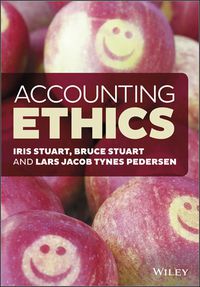Question
1. During the final stage of _______, a secret ballot is taken, during which each member votes for a preferred solution. A. low-risk decision making
1. During the final stage of _______, a secret ballot is taken, during which each member votes for a preferred solution.
A. low-risk decision making B. group decision making C. nominal group technique D. collaborative decision making
2. Asked to organize a pile of materials into useful groups, one team creates a sculpture, another organizes the pile according to the potential use of the objects, while a third team organizes the materials according to what they were made from. This approach to creativity is known as
A. object-related thinking. B. the artist's way. C. the inventor technique. D. design thinking.
3. In general, the decision-making process begins when someone perceives a gap between an existing situation or condition and ends with
A. ignoring it and trusting your gut. B. actions taken to close or narrow the gap. C. postponing a solution for as long as possible. D. asking others for advice.
4. _______ is a tool that provides a structure to combine and recombine ideas to come up with new alternatives to solving a problem.
A. An idea box B. Evidence-based research C. Mindmapping D. Brainstorming
5. _______ is a technique designed to help us think visually and spatially about issues and problems.
A. Synectics B. Design thinking C. Matrix analysis D. Mindmapping
6. People who have the greatest potential for creativity are those who occupy _______, which provide them with enough connections within the organization to stay informed and gain organizational knowledge, as well as enough connections outside the organizations to have the opportunity to hear something new.
A. perceptually unbiased perspectives B. socially diverse backgrounds C. tangential social ties D. peripheral network positions
7. Jamal is assigned to a group charged with making a decision about improving efficiencies in his department. One of the ways he can prevent Groupthink from sabotaging the process of making an effective decision is to
A. stay out of deliberations altogether. B. take responsibility for speaking out. C. censor his own opinions. D. let someone else gather information.
8. Which perspective on creativity suggests that it occurs as a result of the mutual influence of personal factors, environmental characteristics, and the nature of the task?
A. Creativity as a process B. The integrative perspective C. Creativity as a set of cognitive skills D. Creativity as behavior
9. In order to determine the type of decision style that best suits the problem at hand, what question must leaders first ask themselves?
A. "Does the problem possess a quality requirement?" B. "Is the acceptance of subordinates important to successful implementation?" C. "Is there likely to be conflict among subordinates over preferred solutions?" D. "Do I have enough information to make a high-quality decision?"
10. As they reach the _______ phase of the rational model of the decision-making process, Juanita and her team crystalize options for resolving the situation.
A. analysis B. design C. implementation D. incubation
11. Vanessa is a "big ideas'" type of individual, able to see connections between unrelated ideas and to push her organization to adopt new and different paradigms. According to Kirton's theory, she would be recognized as a/an
A. innovator. B. disrupter. C. chaordist. D. adaptor.
12. According to some researchers, while creativity is a dynamic and complex process, certain patterns and elements of orderliness can also be observed. According to this interpretation, creativity is
A. vertical. B. chaordic. C. chaotic. D. linear.
13. After having some success in creative problem solving, the _______ Felicia experiences stimulates her to continue seeking creative ideas.
A. managerial praise B. cautious optimism C. positive emotions D. challenge of time pressure
14. The technique that involves joining together different and apparently unconnected or irrelevant elements is known as
A. mindmapping. B. design thinking. C. matrix analysis. D. synectics.
15. Decisions that take place at the top of the organization typically are labeled _______ decisions.
A. nonprogrammed B. programmed C. low-risk D. strategic
16. The main point of _______ is to increase thinking creatively and generating solutions by prohibiting criticism.
A. the nominal group technique B. focus groups C. brainstorming D. Groupthink
17. In the middle of a page, Samantha draws a tree that represents a problem, and the various branches to represent different aspects or components of the problem. Which creative tool is she using?
A. Design shaping B. Fantasy analogy C. Mindmapping D. Symbolic analogy End of exam
18. _______ thinking occurs when a problem is defined in a single way until a solution is reached.
A. Horizontal B. Critical C. Vertical D. Narrow
19. The term _______ is used to describe an ethical challenge in decision making that involves a willingness to tolerate increasingly serious infractions, so long each one is only marginally more serious than the preceding one.
A. incremental violations B. motivated blindness C. indirect blindness D. reward systems
20. As a manager, Gina knows that the first step in the decision-making process involves
A. managing the involvement of others in the decision-making process. B. identifying the problem and its elements. C. assessing the tradeoffs between quality and speed. D. engaging others in searching for alternatives
Step by Step Solution
There are 3 Steps involved in it
Step: 1

Get Instant Access to Expert-Tailored Solutions
See step-by-step solutions with expert insights and AI powered tools for academic success
Step: 2

Step: 3

Ace Your Homework with AI
Get the answers you need in no time with our AI-driven, step-by-step assistance
Get Started


